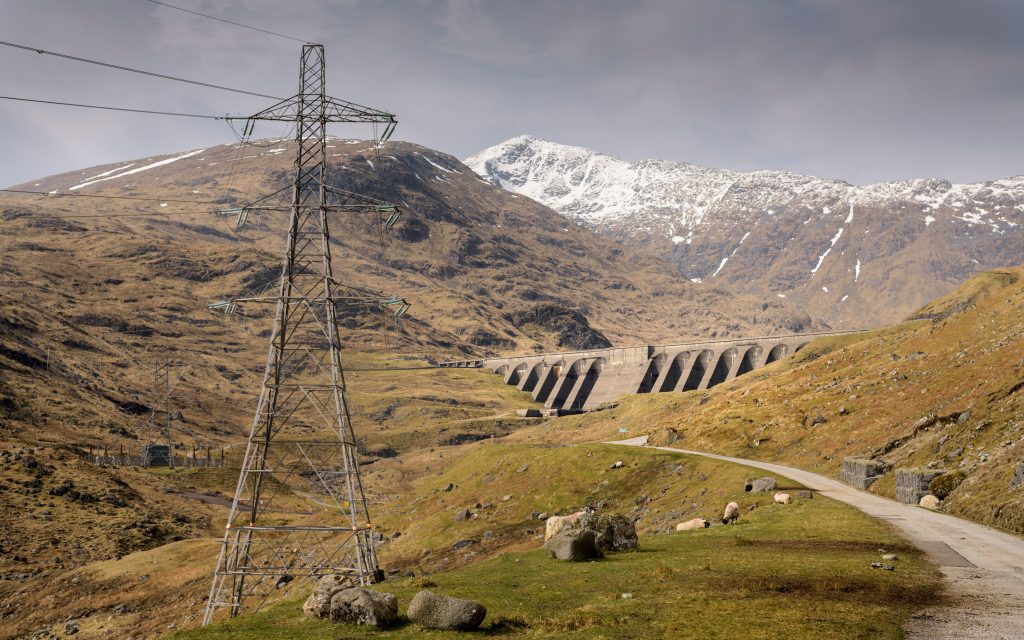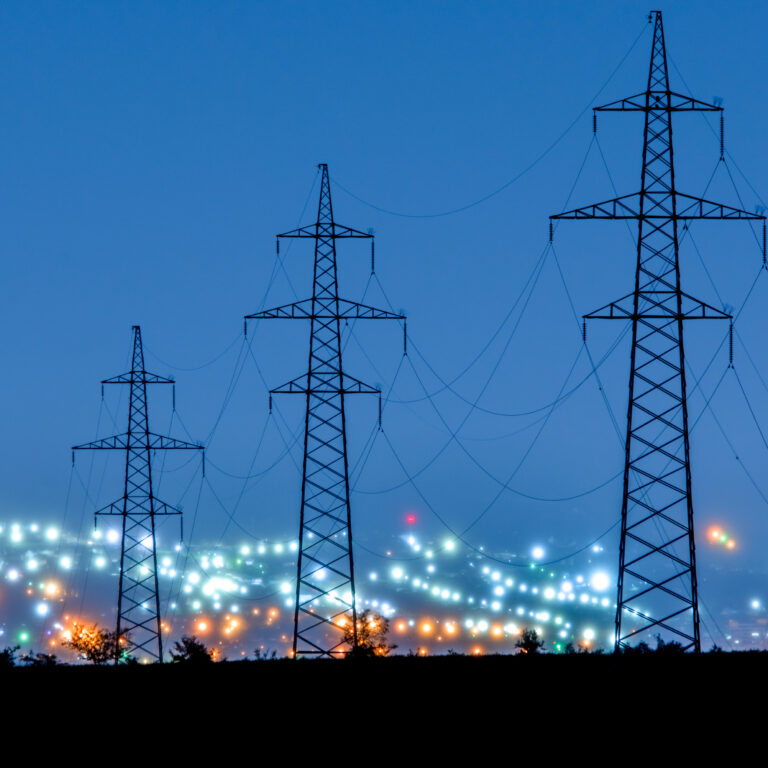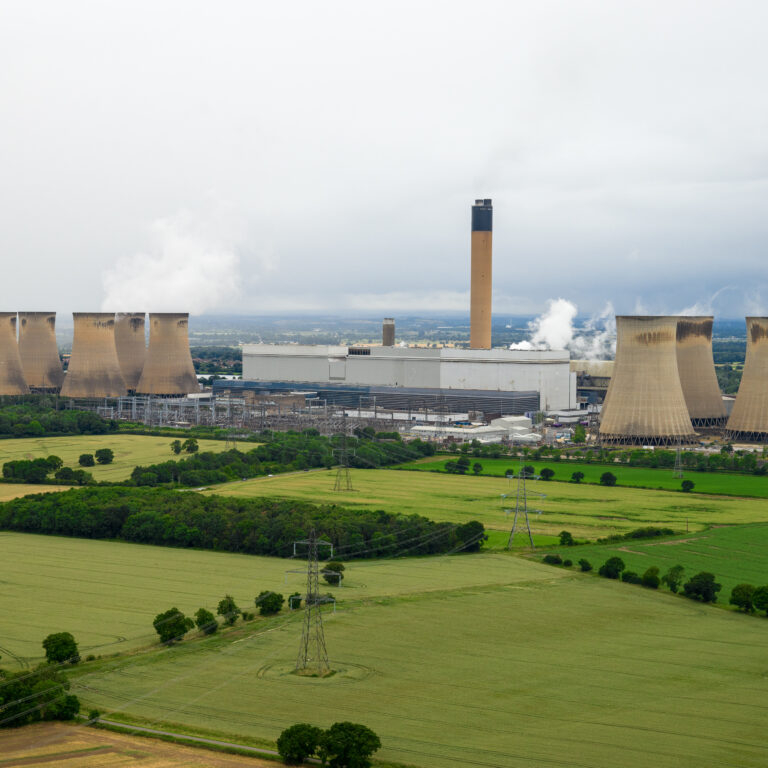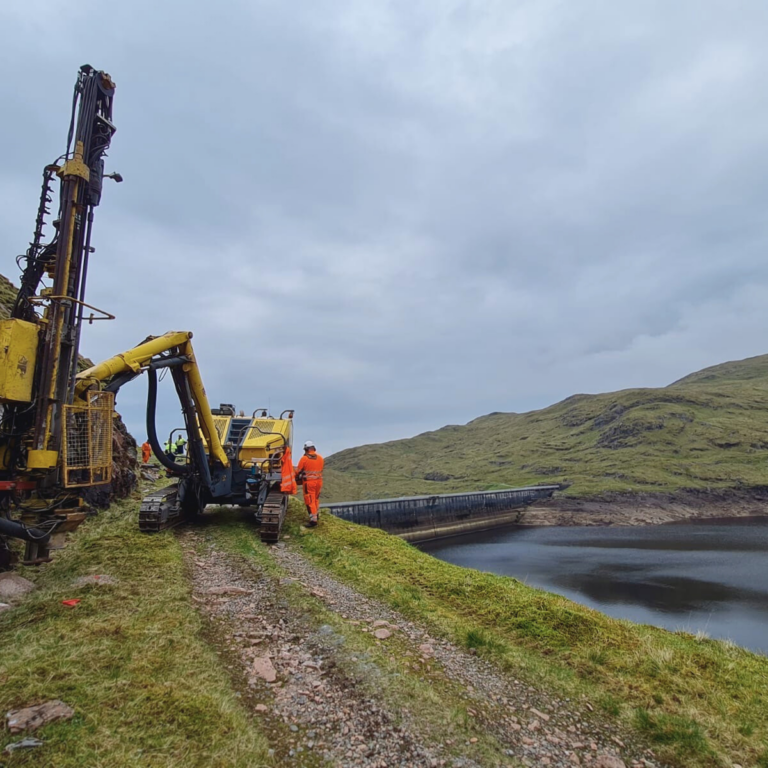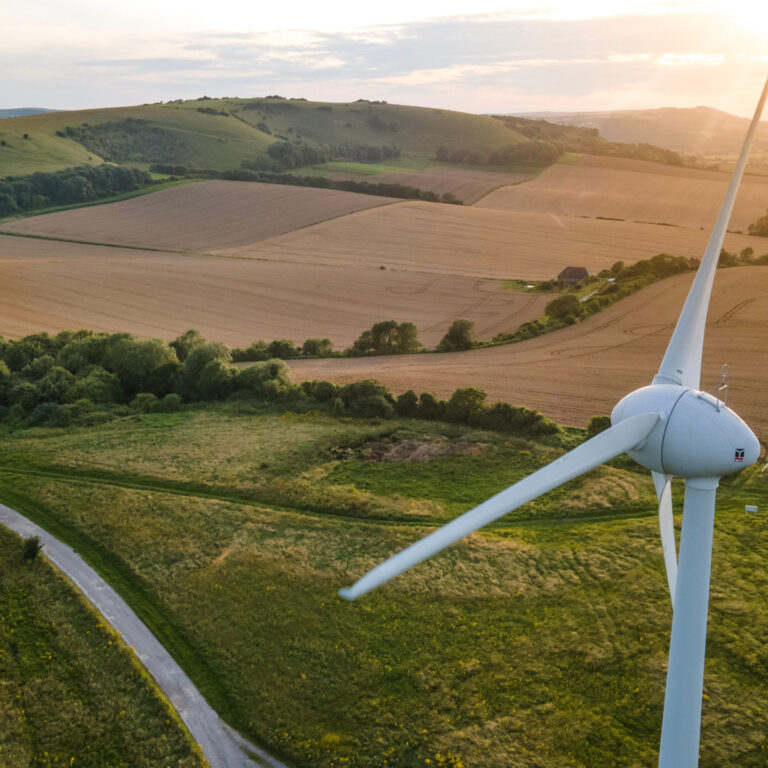- UK’s energy system must prepare for once-in-a-decade prolonged periods of little wind and reduced daylight.
- Report warns recent blackouts in Texas show the danger of overlooking extreme weather risks.
- Britain needs more flexible and longer-term storage from pumped storage hydro, not just batteries, to plug the gap.
Britain’s ever-changing weather could put its landmark net zero climate target at risk and become a threat to the power grid’s security unless policymakers take action, a new report has warned.
The independent report by academics from Imperial College London for Drax Electric Insights, commissioned via Imperial Consultants, shows the UK experienced its longest spell of low wind output in more than a decade during the first quarter of this year. Output from the country’s 24.4 gigawatt (GW) wind turbine fleet fell to as low as 0.6 GW on 3 March, in sharp contrast to the 18.1 GW delivered later that month.
Grid operators had to overwhelmingly call on gas-fired units to generate power to plug the gap, with the report finding every gigawatt of falling wind output being replaced by 0.84 GW of gas – harming Britain’s carbon cutting ambitions.
Periods of reduced generation from intermittent renewables cause strain on electricity systems, with the phenomena recognised in Germany as a Dunkelflaute – a dark wind lull. The event at the start of March was the longest Dunkelflaute that Britain has experienced in the last decade with 11 straight days of low wind output.
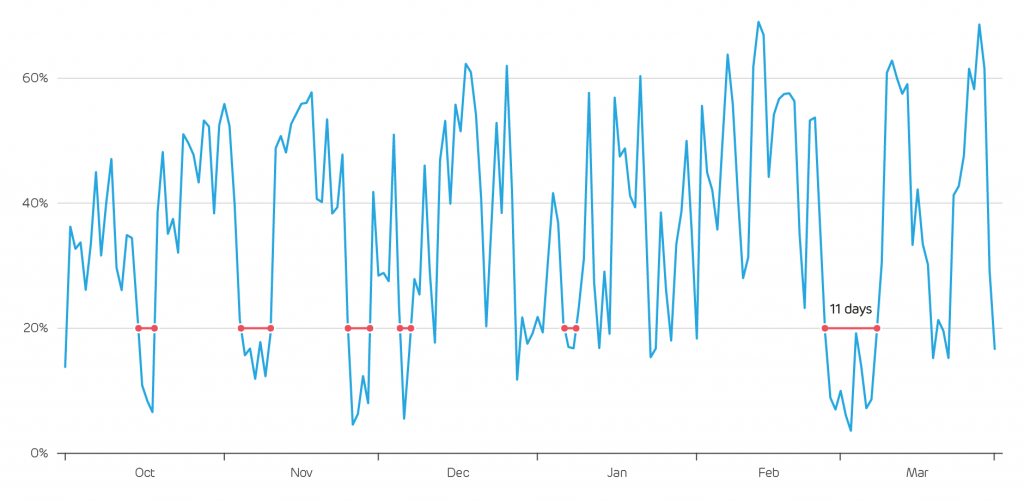
Britain’s wind farm capacity factor over the past six months, highlighting times when it fell below 20% for more than a day [click to view/download]
Dr Iain Staffell of Imperial College London, and lead author of the quarterly Electric Insights report, said:
“It’s time for Britain to get serious about the threat of extreme weather events to our electricity system. Renewable power sources have made our country cleaner and greener, but as they rely on the ever-changing British weather, completing our transition away from fossil fuels comes with serious challenges.
Dr Malte Jansen of Imperial College London, co-author of the report, added:
“With wind and solar power set to supply half our electricity needs in the next five years, these extreme events will become much more impactful. To bridge the gap and deliver a net zero energy system, the UK needs to invest in much more clean and flexible technologies, such as long duration energy storage.”
Pumped storage hydro power stations act like giant water batteries, storing excess energy when there is an oversupply of power and then releasing when the country needs it most. Despite being a key supporting pillar for intermittent generation from wind and solar power, no new pumped storage plants have been built in Britain since 1984.
Renewable energy leader Drax Group is progressing plans to develop a second, underground power station at its existing Cruachan pumped storage hydro plant in Scotland.
Drax Group CEO, Will Gardiner, said:
“A new generation of pumped storage hydro power stations will allow the UK decarbonise faster and cheaper.
“These water batteries soak up surplus power from wind and solar farms and then release it to plug gaps during extreme weather events. Innovative storage projects like Drax’s plans to expand Cruachan are essential to delivering a net zero electricity system, but we need the right investment framework from policymakers for it to become a reality.”
The Drax Electric Insights report found the UK’s pumped storage hydro power stations set a new daily average output high during the first quarter of this year, underlining their increased importance for keeping the power grid stable.
ENDS
Media contacts:
Aidan Kerr
Drax Group Media Manager
T: 07712670888
Editor’s Notes
- The report found the UK is almost entirely reliant on using gas to plug the gap when wind power does not deliver, with every GW of lost wind output being replaced by 0.84 GW of gas.
- Between the 26 February and 8 March, the capacity factor of the national wind fleet did not go above 20%.
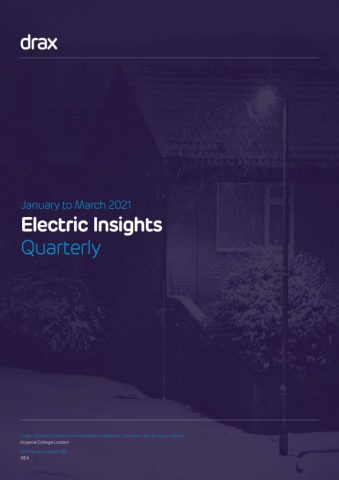
[Click image to view/download the report PDF or alternatively read the report webpage here]
- Wind farm output fell to as low as 0.6 GW on 3 March.
- Biomass units generated a record amount of renewable power during the period, with 3.83 GW supplied to the grid on 7 January.
- Based on longer records of historical wind speed data from Renewables.ninja (a project co-developed by Drax Electric Insights lead author Dr Iain Staffell), the March Dunkelflaute could be expected roughly once every 20 years in Britain.
- Pumped storage hydro power stations set a new daily output average high of 409 MW during the first quarter of 2021.
- Drax is progressing plans to expand its existing ‘Hollow Mountain’ Cruachan pumped storage hydro plant in Scotland.
- A separate independent report by academics from Imperial College London recently found that just 4.5 GW of new pumped storage hydro could save up to £690m per year in energy system costs by 2050.
About Electric Insights
- Electric Insights is commissioned by Drax and delivered by a team of independent academics from Imperial College London, facilitated by the college’s consultancy company – Imperial Consultants. The quarterly report analyses raw data made publicly available by National Grid and Elexon, which run the electricity and balancing market respectively, and Sheffield Solar.
- Electric Insights Quarterly focuses on supply and demand, prices, emissions, the performance of the various generation technologies and the network that connects them.
- The quarterly reports from the last four and a half years can be access at the new website reports.electricinsights.co.uk alongside the interactive electricinsights.co.uk which provides data from 2009 until the present.
- You can embed Electric Insight’s live dashboard on your website or blog to keep track of what’s happening in the power grid through a new widget.
About Drax
Drax Group’s purpose is to enable a zero carbon, lower cost energy future and in 2019 announced a world-leading ambition to be carbon negative by 2030, using Bioenergy with Carbon Capture and Storage (BECCS) technology.
Its 3,400 employees operate across three principal areas of activity – electricity generation, electricity sales to business customers and compressed wood pellet production and supply to third parties.
Power generation:
Drax owns and operates a portfolio of renewable electricity generation assets in England and Scotland. The assets include the UK’s largest power station, based at Selby, North Yorkshire, which supplies five percent of the country’s electricity needs.
Having converted Drax Power Station to use sustainable biomass instead of coal it has become the UK’s biggest renewable power generator and the largest decarbonisation project in Europe. It is also where Drax is piloting the groundbreaking negative emissions technology BECCS within its CCUS (Carbon Capture Utilisation and Storage) Incubation Area.
Its pumped storage, hydro and energy from waste assets in Scotland include Cruachan Power Station – a flexible pumped storage hydro facility within the hollowed-out mountain Ben Cruachan.
Pellet production and supply:
Drax owns and has interests in 17 pellet mills in the US South and Western Canada which have the capacity to manufacture 4.9 million tonnes of compressed wood pellets (biomass) a year. The pellets are produced using materials sourced from sustainably managed working forests and are supplied to third party customers in Europe and Asia for the generation of renewable power.
Drax’s pellet mills supply around 20% of the biomass used at its own power station in North Yorkshire, England to generate flexible, renewable power for the UK’s homes and businesses.
Customers:
Through its two B2B energy supply brands, Haven Power and Opus Energy, Drax supplies energy to 250,000 businesses across Britain.
For more information visit www.drax.com








